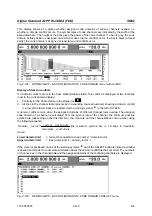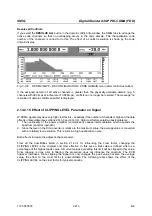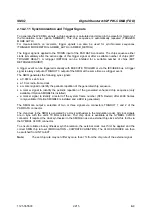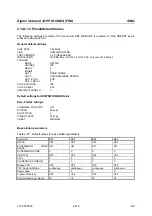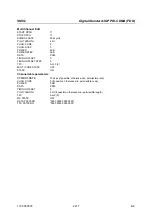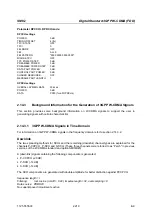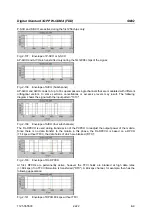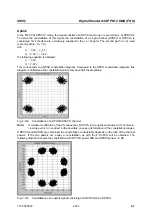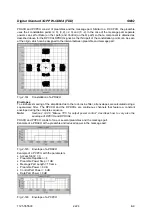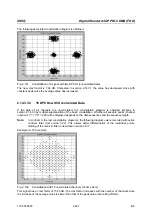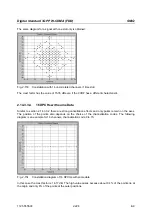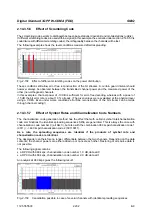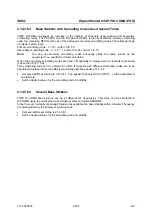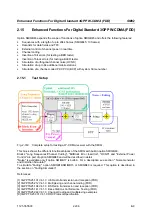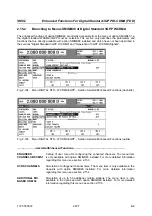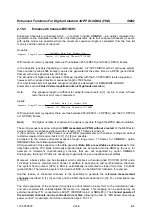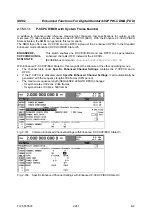
Digital Standard 3GPP W-CDMA (FDD)
SMIQ
1125.5555.03
E-9
2.226
2.14.3.3.1
Two DPCHs with Uncorrelated Data
If the two channels are uncorrelated (data source PRBS with active option
),
the resulting constellation diagram is obtained from the superposition of the constellations of two
separate signals (see Fig. 2-102).
Fig. 2-149
Constellation of a signal with two DPCHs (uncorrelated data)
The resulting crest factor is 8.07 dB.
2.14.3.3.2
Two DPCHs with Same Data
If the two channels contain exactly the same data (PRBS data source with equal initial values), the individual
components only differ in the channelization codes. Comparing any two lines of the channelization code matrix
shows that 50% of the bits are identical and 50% are different (orthogonal matrix)). Where the bits are
identical, the two channels furnish the same components; where the bits are different, the components cancel
each other. The I/Q signal of this sum signal would then have the following characteristic:
Fig. 2-150
Signal with two DPCHs (same data) in time domain
Note:
The bursts occurring at regular intervals are due to the use of the channelization code numbers
0 and 1. The two lines of the matrix are identical in the first half and different in the second half.
Therefore, each of the 40 source symbols causes one of these bursts, the period of which is
equivalent to half the symbol length. Other combinations of channelization code numbers often
cause erratic results.

